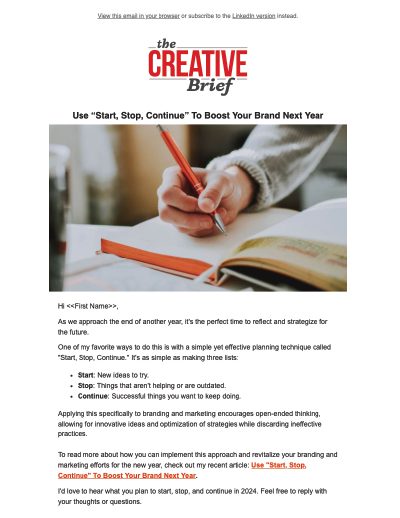
Managing and leading is difficult enough, but managing and leading creative teams is even more challenging. I decided early on in my career that I wanted to learn as much as I could about managing and leading people, because I knew I was going to be in the position to lead people and manage a business. In fact, I was doing it already as the head of my own studio but I also knew that going back in-house was in my future.
In this post, I want to share 4 things with you that I have learned along the way, to keep in mind as you manage and lead your own teams.
1. Don’t be a “Boss”.
People don’t like to be bossed around or told what to do, and in my experience that goes double for creative professionals. Instead, act like a coach and make suggestions that help your team improve performance or work through the creative challenge. Creative people love challenges and are goal oriented, so coach them through solving those creative challenges with their creativity and determination and give them the guidance they need rather than orders to follow.
2. Development opportunities come in many forms.
Ongoing development is another coaching trait that you don’t want to overlook when managing creative teams. It’s important to recognize however the difference between training, and learning. Training is a structured process like a webinar, course, or class where someone is taught specific skills to do a job. Learning, while also being an outcome of training, is something someone can achieve while doing something new. Consider challenging your team members to learn something new by giving them a task they have never done before like doing presenting to concepts to corporate officers, or working on a type of project they’ve never worked on before.
3. Managing and leading are two different things.
One of my favorite quotes about leading versus managing comes from Stephen R. Covey’s The 7 Habits of Highly Effective People: “Management is efficiency in climbing the ladder of success; leadership determines whether the ladder is leaning against the right wall.”
An effective manager has a technical understanding of the job that needs to be done, and is effective at motivating and utilizing the resources available to them. Strong leaders can articulate vision to an audience, regularly involve people in making decisions, provide regular feedback and coaching, and act as a role model. In other words, good management is about maintaining order and consistency to quality while leadership is about coping with change and the process of motivating others to work toward specific objectives.
Leading is future and people oriented. It is creative rather than reactive. The more time we spend leading, the less time we need to spend managing.
4. Trust.
If you Google “leadership and trust” you’ll find much has been written about how great leaders share the trait of being highly trusted. Leaders who inspire trust have better morale, loyalty, and innovation from their teams while mistrust fosters frustration, low productivity, and high turnover and attrition.
You hired your creative team members because they are talented. Let them do their job. I attribute a great deal of my own success as a creative business leader to how much trust I give my team to do what they are good at and in return, I have earned their trust as their leader.
If you like what you’ve read here, join me for my upcoming webinar on January 28th from 1-2pm ET. I’ll will share techniques and skills I’ve personally used to build creative teams, manage resources, and lead people. You’ll leave this webinar with some practical tools to enhance your creative skills with those needed to manage, and lead your in-house creative team and bring added value to your corporate culture.


